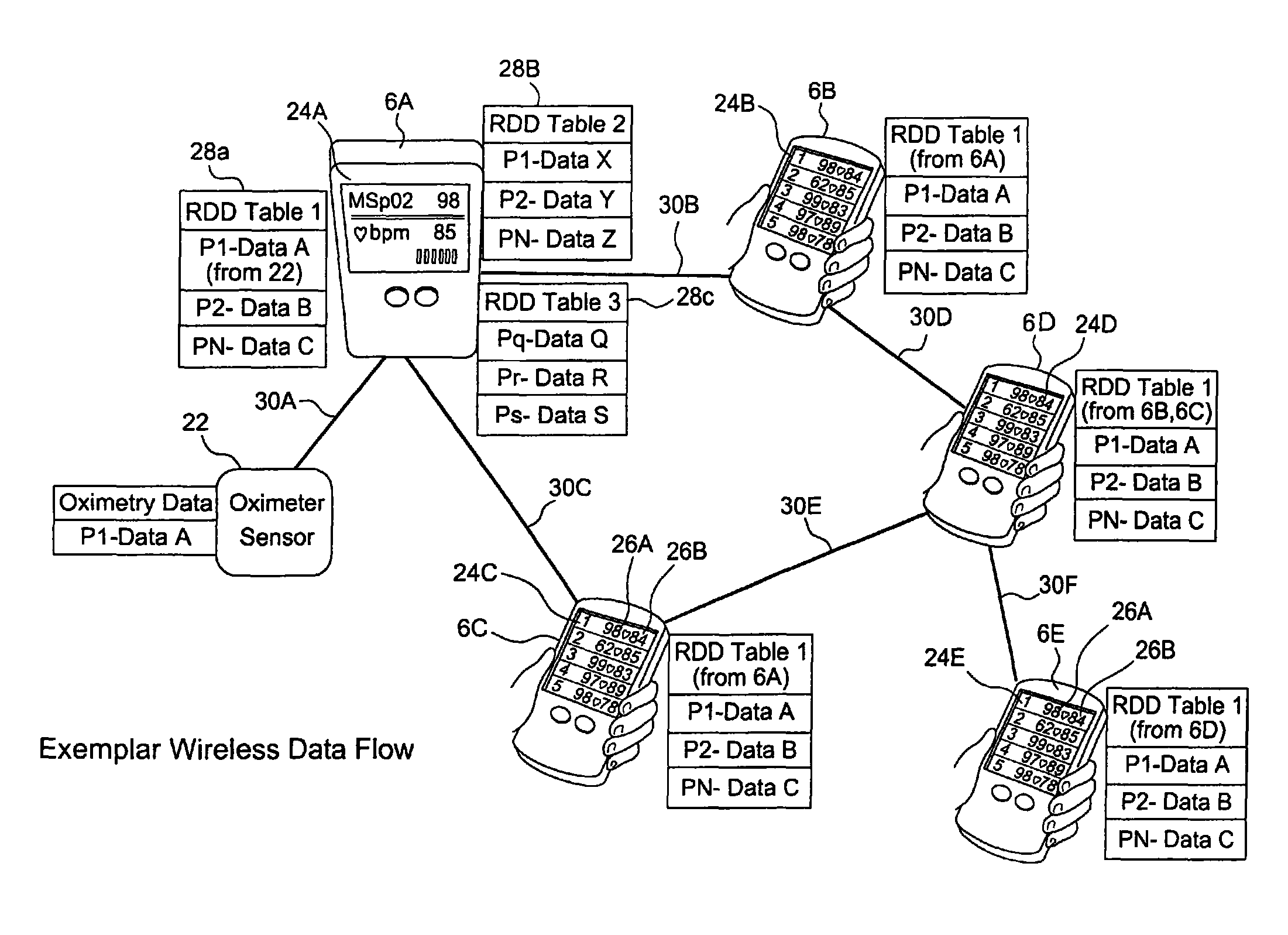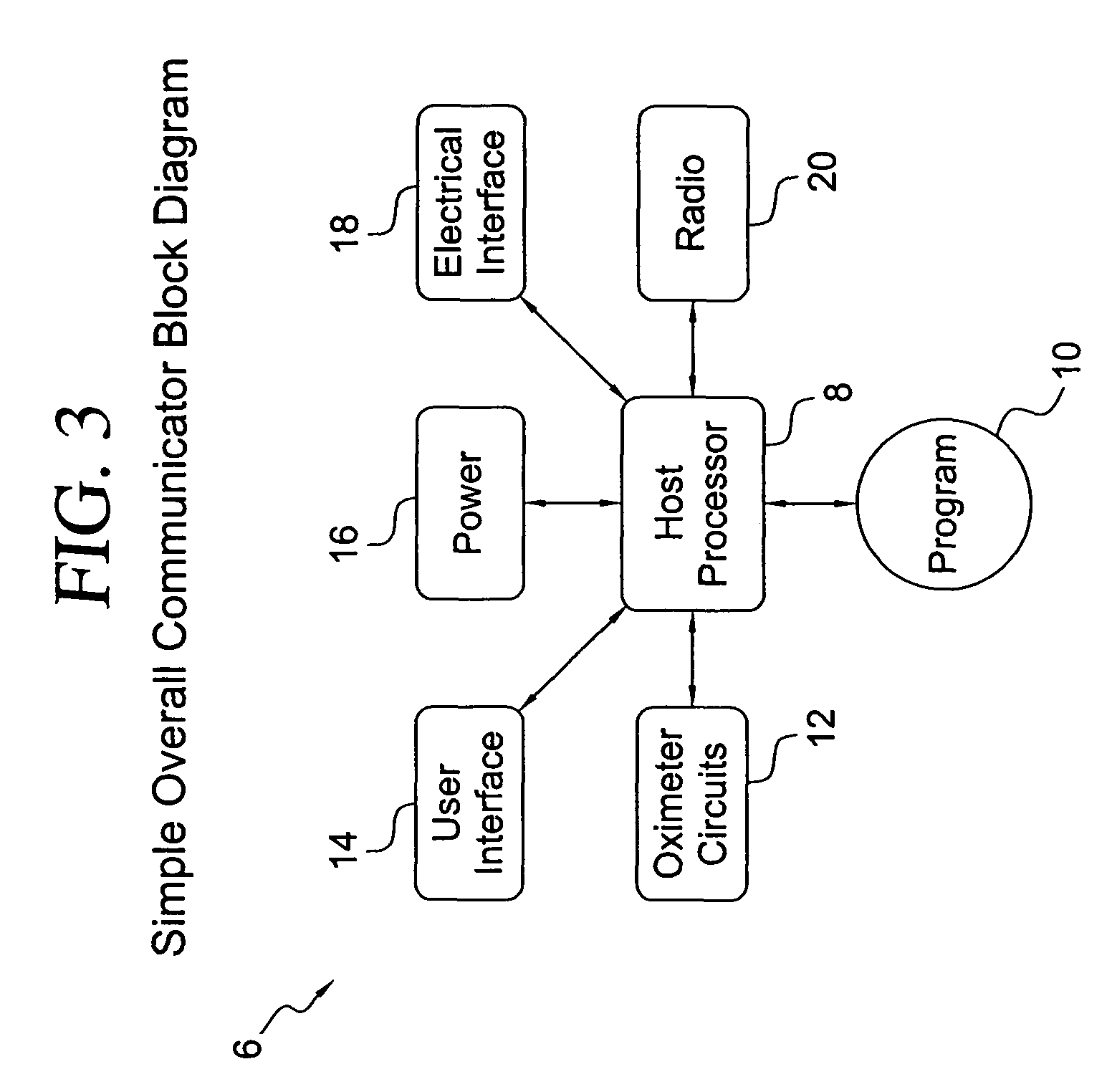Wireless telecommunications system adaptable for patient monitoring
a telecommunications system and patient technology, applied in the field of wireless telecommunications networks, can solve the problems of not being particularly suitable to all prior art systems
- Summary
- Abstract
- Description
- Claims
- Application Information
AI Technical Summary
Benefits of technology
Problems solved by technology
Method used
Image
Examples
Embodiment Construction
[0051]With reference to FIGS. 1a and 1b, a communications network, in the configuration for example of a peer-to-peer network, is shown. For the exemplar wireless network 2 shown in FIG. 1a, there are four nodes 1-4, as well as a node N that signifies that the network can have N number of nodes. For the embodiment of the invention shown in FIG. 1a, it is presumed that each of the nodes shown may be represented by node 4 of FIG. 1b in that each of the nodes of the network may be a medical device that includes a radio, which may be a transmitter or transceiver. The medical device may be any one of a number of devices that monitor or measure physical attributes or parameters of a patient or subject. Such medical devices include, but are not limited to, oximeters, heart rate monitors, capnographs or CO2 monitors, pumps that connect to the patient and other devices that monitor particular physical attributes of a patient. For example, in the case of a pulse oximeter, the oxygen level of ...
PUM
 Login to View More
Login to View More Abstract
Description
Claims
Application Information
 Login to View More
Login to View More - R&D
- Intellectual Property
- Life Sciences
- Materials
- Tech Scout
- Unparalleled Data Quality
- Higher Quality Content
- 60% Fewer Hallucinations
Browse by: Latest US Patents, China's latest patents, Technical Efficacy Thesaurus, Application Domain, Technology Topic, Popular Technical Reports.
© 2025 PatSnap. All rights reserved.Legal|Privacy policy|Modern Slavery Act Transparency Statement|Sitemap|About US| Contact US: help@patsnap.com



